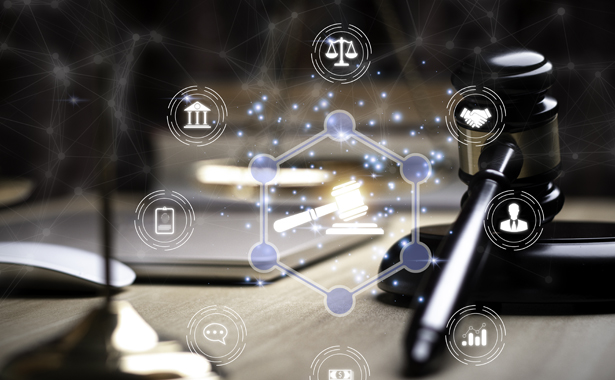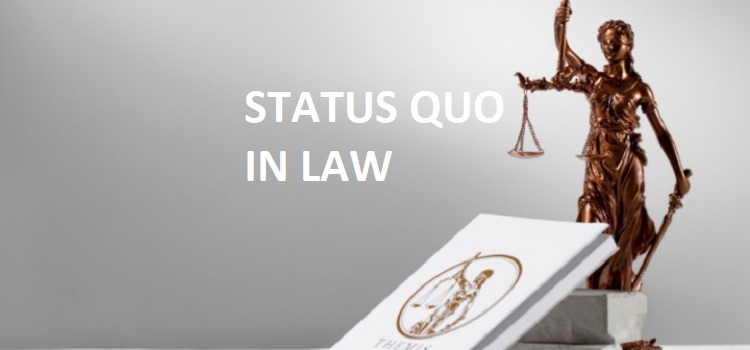Browsing the Characteristics of Status in Legal Solutions: An Alternative Method
In the realm of legal systems, the principle of status holds a substantial function in forming the foundation whereupon legislations and regulations are built. Recognizing and efficiently browsing the characteristics of the condition quo needs an all natural approach that exceeds mere surface-level evaluation. By delving into the complex interaction of numerous variables influencing the lawful status quo, one can uncover nuanced understandings that lead the way for informed decision-making and tactical planning. As we discover the complexities surrounding this essential element of legal structures, a much deeper understanding of the difficulties and chances that feature it emerges, advising us to reconsider standard techniques and welcome a more extensive viewpoint.
The Importance of Status Analysis
In lawful procedures, carrying out an extensive condition quo evaluation is critical to understanding the current state of events and offering a structure for informed decision-making. This evaluation includes a thorough evaluation of existing problems, agreements, and situations that form the context within which lawsuits are being taken into consideration. By analyzing the status, lawful specialists can recognize vital stakeholders, responsibilities and civil liberties, prospective threats, and possibilities for resolution.
In addition, diving right into the standing quo promotes the recognition of any type of voids or incongruities that may exist, clarifying areas that need attention or clarification. This process help in establishing practical assumptions and creating methods that line up with the prevailing scenarios. Comprehending the status is important for establishing a roadmap that overviews lawful proceedings in the direction of reliable results while minimizing unintentional consequences.
Ultimately, a precise status evaluation works as a foundation for audio lawful recommendations and tactical preparation. It allows legal experts to navigate complexities, expect difficulties, and tailor their strategy to accomplish favorable results for their customers.
Elements Affecting Lawful Standing Quo
Taking into consideration the elaborate internet of regulations, regulations, and social norms, what are the main factors that shape and affect the legal status quo in contemporary lawful systems? A number of key aspects play essential roles in determining the legal status quo within a lawful system. In addition, political characteristics and the balance of power within a legal system can heavily influence the lawful status quo.
Strategies for Status Quo Administration
Efficient administration of the lawful condition quo calls for a critical strategy that acknowledges the dynamic nature of legal systems and the varied variables influencing them. One vital technique for standing quo monitoring is normal surveillance and analysis of legal developments.

Moreover, effective communication and collaboration among stakeholders are essential strategies for handling the status in legal systems. By cultivating open dialogue and collaboration in between policymakers, attorneys, and various other appropriate parties, possible conflicts can be attended to proactively, and solutions can be developed collaboratively to keep a steady legal atmosphere.
Challenges in Status Adjustment
Additionally, the lack of clear standards for navigating status modifications can create uncertainty and ambiguity. When trying to challenge existing standards or incorporate brand-new legal frameworks, legal professionals usually discover themselves in undiscovered territory. This can bring about hesitancy and unwillingness to differ acquainted practices, better hampering the adaptation process.

Applying Holistic Techniques
Integrating a comprehensive perspective right into legal approaches is essential for addressing the diverse obstacles of modern legal systems. Executing all natural strategies involves a shift in the direction of seeing lawful problems as interconnected components of a bigger system instead of separated cases. This calls for a proactive position that considers not just the instant legal effects however likewise the broader societal, financial, and honest impacts of legal choices.
One key facet of applying alternative strategies is fostering interdisciplinary partnership within legal teams. By bringing with each other experts with diverse backgrounds such as law, psychology, economics, and sociology, an extra nuanced understanding of intricate lawful problems can be achieved. This collective approach makes it possible for legal professionals to establish more efficient approaches that make up a variety of elements influencing the end results of legal instances.
Additionally, accepting modern technology and data-driven understandings is crucial in applying holistic techniques in legal systems. Leveraging tools like artificial knowledge for legal research study, anticipating analytics for case results, and data visualization for offering intricate information can enhance decision-making processes and enhance total legal end results. By incorporating these technological developments visit site into legal practice, an extra reliable and all natural technique to attending to legal challenges can be accomplished.
Final Thought
In conclusion, browsing the dynamics of standing quo in legal systems requires an extensive understanding of the significance of status quo evaluation, the different variables influencing legal status, reliable approaches for status administration, and the difficulties in status adaptation. Carrying out alternative methods is vital for successfully handling and adjusting to the status in lawful systems. It is critical for attorneys to constantly examine and adjust to the altering dynamics of the status to guarantee efficient and effective legal end results.
Taking into consideration the detailed web of legislations, laws, and societal standards, what are the primary variables that form and affect the lawful standing quo in contemporary lawful systems? Numerous vital elements play critical duties in determining the lawful condition quo within a lawful system. It is the interplay of these factors that jointly form and influence the lawful condition quo in modern legal systems.
Reliable management of the legal condition quo needs a critical technique that recognizes the dynamic nature of legal systems and published here the varied factors affecting them.In conclusion, navigating the dynamics of standing quo in lawful systems requires a thorough understanding of the significance of status quo analysis, the different factors affecting lawful status quo, efficient methods for status quo management, and the obstacles in condition quo adaptation.